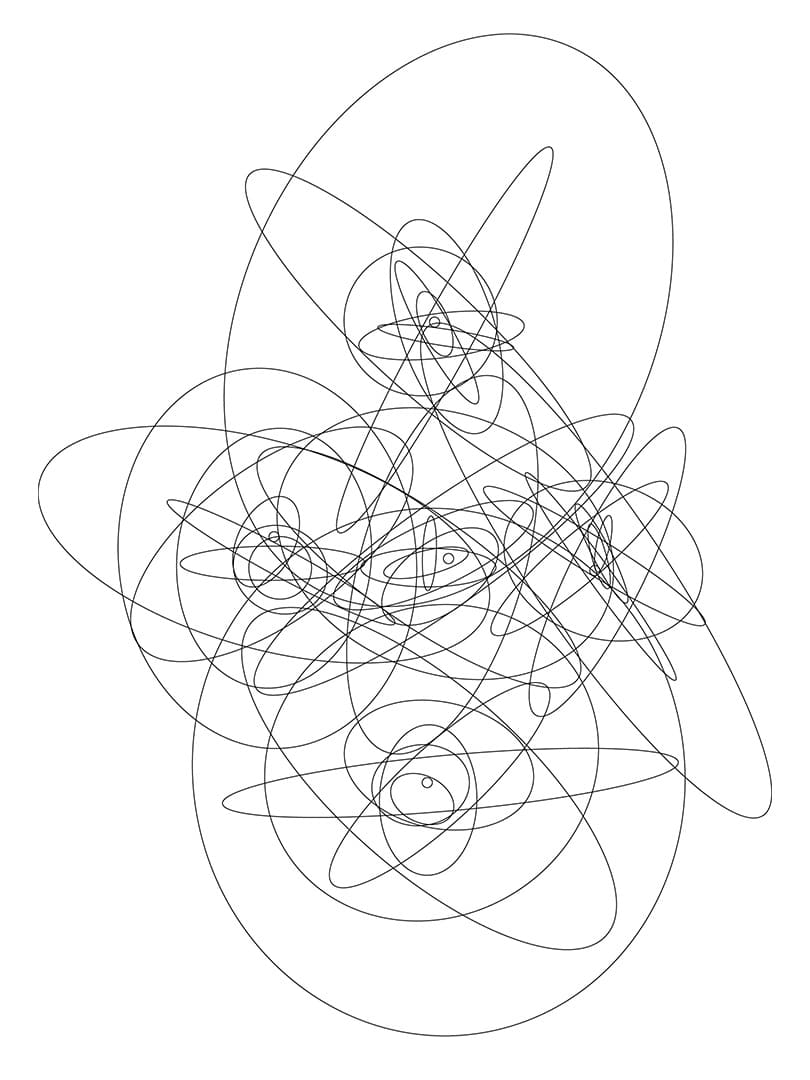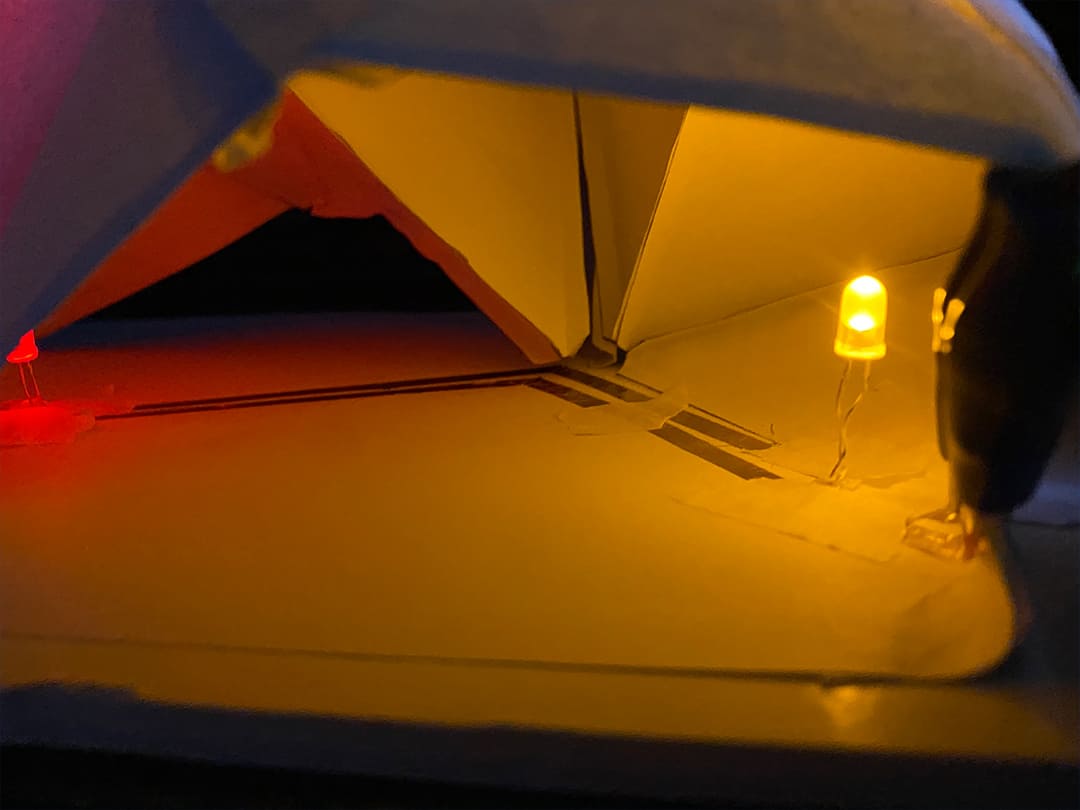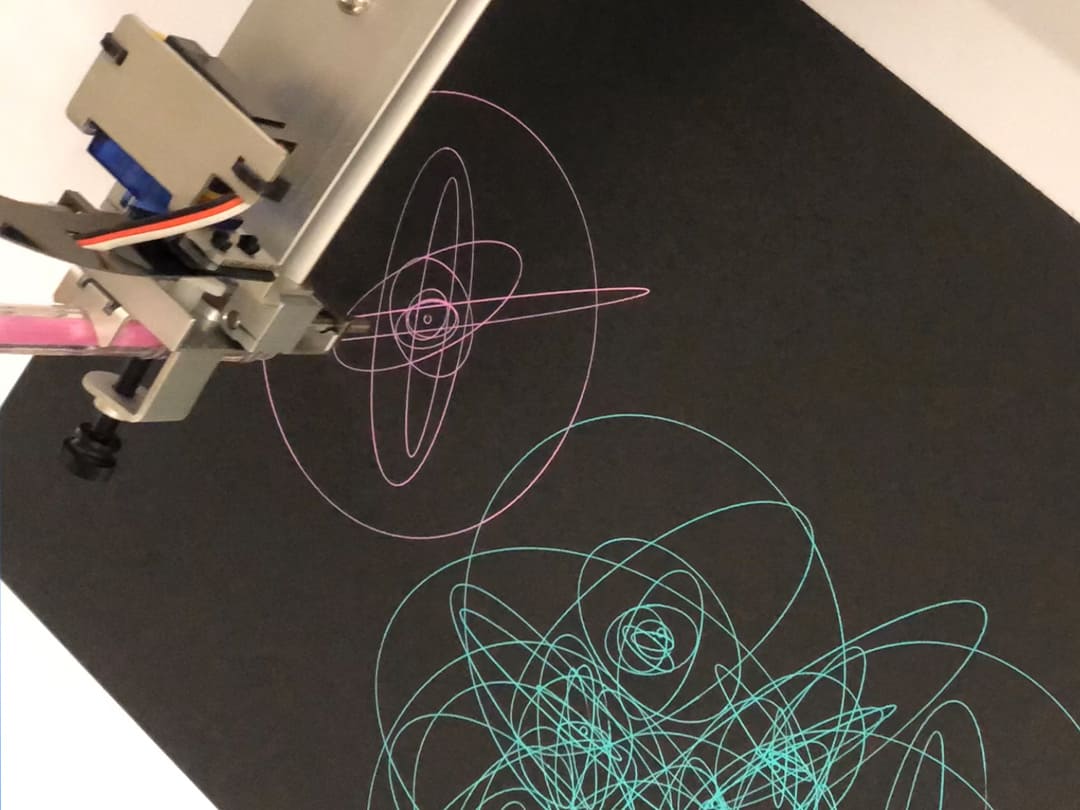
INTRODUCTION
Computation in Design is the amalgamation of two worlds: Art and Science, resulting in exceptional works of art by defying traditional mediums and diving into the bustling digital era of design. Also known as Creative Coding, it is an integral skill that has helped us, designers, reinvent ourselves with the growing trends whilst forming a holistic approach towards our field.
Over the semester I participated in 4 different workshops, which was designed to test a range of our abilities other than our ability to code, such as critical thinking, attention to detail, craftsmanship and more. This website is a documentation of my process and outcomes, as well as a showroom for the deliverables of each workshop.
As for me, I'm Devanshi Sarat Jain, a freshman designer majoring in the BA Hons Design Communication course in LaSalle College of the Arts.
WORKSHOPS 1–4
The workshops this semester covered topics such as Creative Coding, Projection Mapping, Making, and Physical Computing. Each of the workshops allowed us to explore creative coding in a more tangible form. Though each workshop was quite different from one another, the common theme amongst them was of Generative Design. Other than the development of my skills, I had the pleasure of collaborating in small teams of up to 3 for the majority of these workshops.
1 >> CODING
AxiDraw - Cosmic Divinity.
Opting for AxiDraw, we were excited to create physical works of art using code. We also decided to use the concept of Soundscapes, generating the artworks using our voice. To stand out, we used black paper instead of white and highly-opaque pens of different colors. Due to our limited knowledge on AxiDraw, we encountered certain obstacles such as time constraints and technological malfunctions, which made our work less time-efficient.
However, the finished product of our hardwork was completely worth the hardships we faced. We loved how our worked looked, so much so that we created a 3-part series. We named it 'Cosmic Divinity' because our work resembled galaxies and stars in outer space.
All in all, this workshop was a great introduction to the world of Generative Design, which left me positively fascinated and amazed.




2 >> SCREENS
Projection Mapping
This workshop was pure fun and experimental in nature for me and my groupmates. Our theme for this workshop was based on the Immersive Van Gogh Experience Exhibition. We recreated some of Van Gogh's famous paintings (Starry Night, Irises, Midnight Café) and added an animation using Adobe After Effects to distort the painting, paying tribute to Van Gogh through our own mini-immersive experience.
Though there were certain restrictions placed upon us regarding the shapes of our 3D models, we decided to defy it by using a circle and a flower; organic shapes as our models. We hit some bumps along the road, such as the time-constraints, lack of experience and creative differences, but we were able to create something that included a piece of our identity in this project.
We turned to Joanne whenever we had technical difficulties due to our obvious lack of experience, which she was always happy to help us out! Despite having a challenging time, we sure did love our final outcome! I'm glad that my group and I took on a challenge that we were restricted of in the first place. It was fun to be rebellious and defy the rules, whilst producing something so visually captivating.


3 >> MAKING
From Code to Thing
In this workshop, we were required to make 3D paper models generated using Code. We were provided with a readymade code that generated 3D models of interesting shaped polygons, which we could tamper and play with by changing its coordinates. We were to export the Paper Model of our desired polygon using Blender, which would allow us to then create a 3D model.
My concept behind this workshop was inspired by my favorite DC superhero, Superman, and his only vulnerability, Kryptonite. I chose a monochrome pallete involving 3 different shades of green and three different sizes of polygon, each a different shape. I generated the polygon by manually changing the coordinates and further refining the shape on Blender.
This workshop was far from any arts and crafts class you may have done as a child. required the utmost precision and attention to detail. While I didnt face challenges in the first half, I faced most of them in the second half while hand-making my model. Despite a lengthy proces of trial and error, the finished product turned out pretty good! Though there were some imperfections, I knew I had done my best as an amateur in crafting. I loved the simplicity and the personal touch of nostalgia of my concept! (I was especially proud of my brochure, too)




4 >> PLAY
Physical Computing
This workshop involved creative experimentation with a crash course in physics. We learnt how to operate LED lights with simple input and output tools. After understanding the function of the light circuit using simple tools such as batteries, copper tape and LEDs, we designed a model around our light circuit. To display simple physical interaction, we were further introduced the Arduino Kit, encouraging us to implement fun ways to interact with our lights.
My group's concept was inspired by Architechture and the bounds it crossed. We referred to some of the most popular architechtural landmarks, and tried forming one of our own using simple shapes such as the triangle, keeping it minimal and abstract. we used a Chinese-lantern making technique to create our model. Our aim was to utilize all 3 of our LED lights by creating a triple circuit.
This was by far, the most challenging workshop in the entire semester. We faced several problems throughout the process of creating a light circuit. We also faced technical problems such as light malfunction, because of which we were only able to use 2 LEDS to create our light model. Nonetheless, it was difficult to operate a double circuit due to malfunctions. After some trial and error, and a lot of discussion with Andreas, we decided to create a single circuit, which was appropriate for our model too!



PROCESS
Computation in Design really encouraged me to step out of my comfort zone this semester by exploring and combining different mediums of designing and work with them in ways I never thought would be possible. As we were being introduced to various concepts and methods, I couldn't help but be amazed at how limitless design really is. Despite growing individually, I was quite happy abut the fact that groupwork was a big part of the workshops. I enjoyed brainstorming and collaborating with like-minded people, though I enjoyed discussing about our creative differences even more. I liked how, despite having different opinions, we were able to find a common ground for our ideas.
Learn the rules like a pro, so you can break them like an artist.
Pablo Picasso




CONCLUSION
What have I learned over the course of this semester?
This semester involved nothing but tons of personal growth as an artist.
Learning several approaches to design really pushed me out of my comfort zone,
something I'm always striving to do as a designer. The mix of both physical and
digital approaches to Generative Design taught me how art and design can never be
put into a box.
Some of my most interesting findings this semester:
Surprisingly, the translation of digital design into something tangible. Before this
course, I was clueless of about the relationship between technology and design, but to discover
that the two aspects are deeply related and interdependent on one another was beyond my thinking.
I believe that this mode of design is quite impactful and is already up and coming in our field,
because of the way it changes the face of design.
What are some of my achievements?
This semester was filled with creative and personal growth, especially with Computation in
Design! Aside from developing my creative skills, I also learnt some life lessons regarding time management and
compartmentalising... and the importance of sleep.
Through the group projects, I have learnt to
become an ideal team member, being able to take on several tasks and roles all at once, and learning
to be more open-minded to different ideologies while contributing some of my own. I understood the
importance of Code and its role in Design, despite not using much code this semester. (except for this website)
I'm definitely looking forward to all the things this beautiful and fascinating course has to offer next year!





